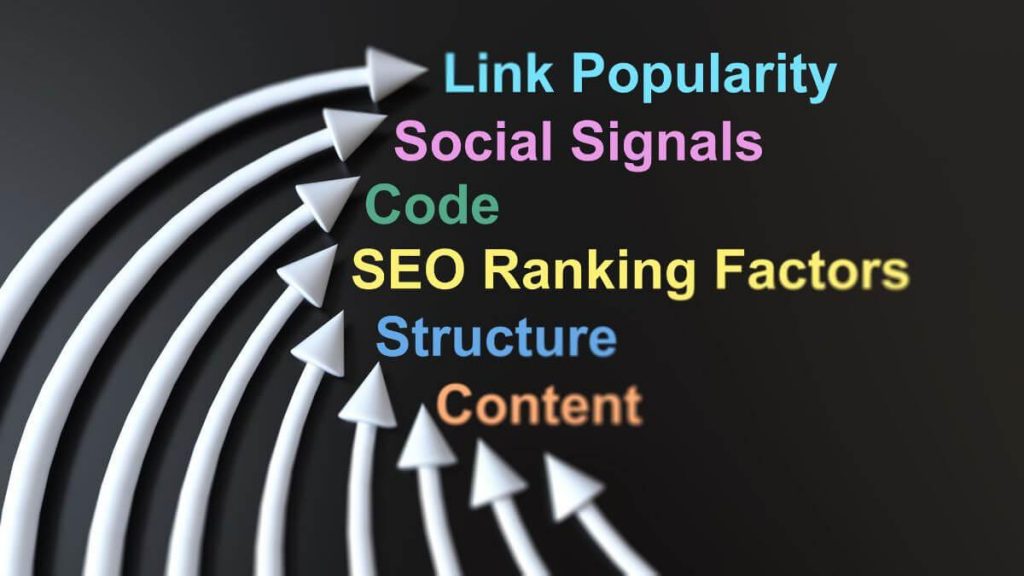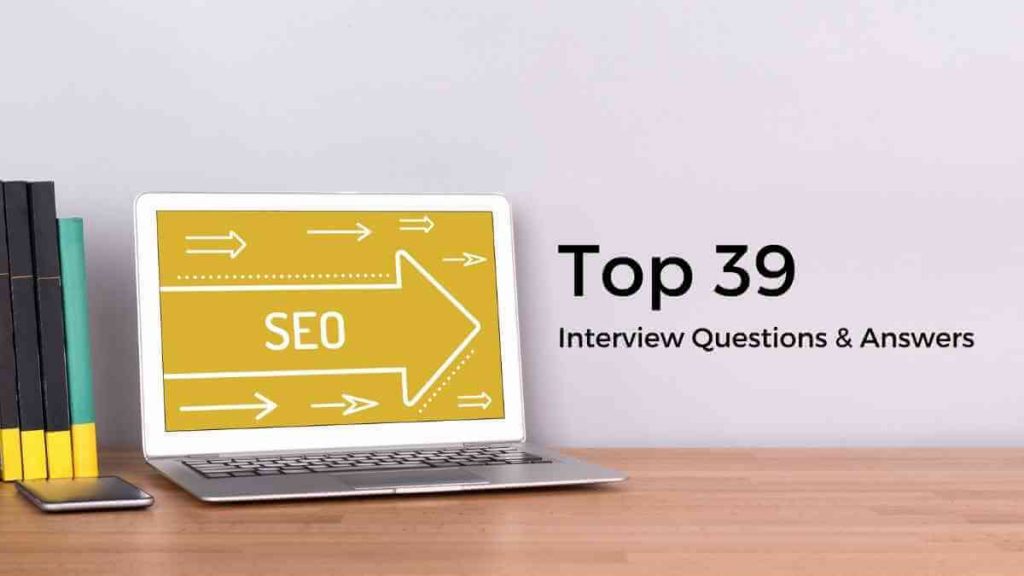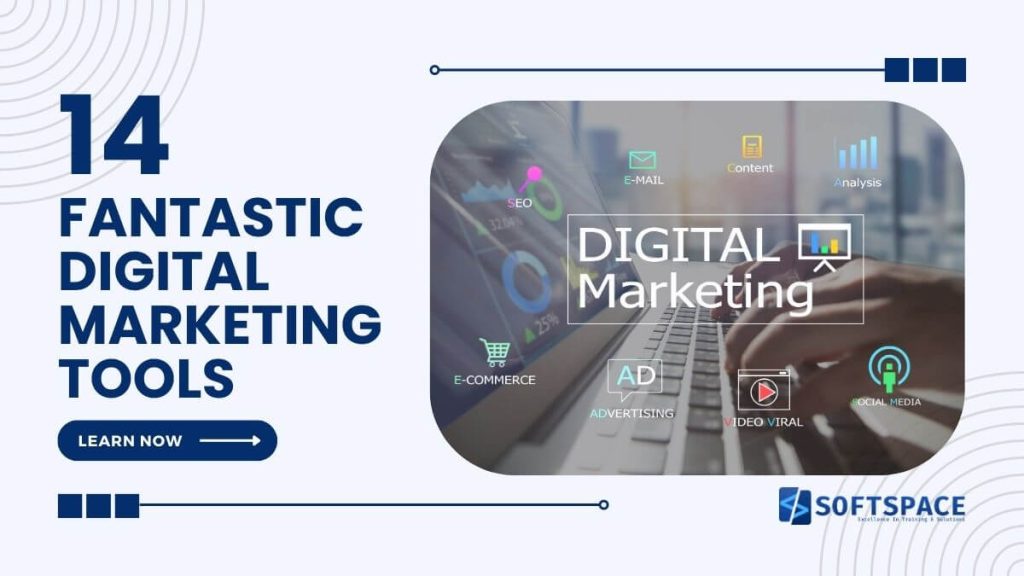SEO is a marketing discipline focused on growing visibility in organic (non-paid) search engine results. SEO encompasses both the technical and creative elements required to improve rankings, drive traffic, and increase awareness in search engines.
There are many aspects to SEO, from the words on your page to the way other sites link to you on the web. Sometimes SEO is simply a matter of making sure your site is structured in a way that search engines understand.
Check out the following SEO interview questions and answers for your next interview.
1. What is SEO?
SEO is the art and science of improving your website’s visibility in search engine results pages (SERPs) through organic and inbound marketing. It’s like an online form of word-of-mouth marketing, where you want to make sure that when someone searches for something on Google or Bing, your site comes up as one of the first results.
2. What are the benefits of SEO?
- First and foremost, SEO is a way to get your website more exposure.
- With the proper optimization, your site can appear higher than its competitors in organic search results (and all those other sites that pay for ads).
- If you’re looking to build brand awareness or establish yourself as an authority on a topic, you’ll also want to consider SEO as part of your marketing strategy—it’s one of the most cost-effective ways there is!
3. What is On-Page Optimization in SEO?
On-Page Optimization is the process of optimizing a web page to be search engine friendly. On-Page optimization includes:
- Title tags – A title tag should contain both keywords and brand name, it should be short, simple, and easy to read.
- Meta description – Meta description helps search engines like Google understand what your web page is about so that they can improve their ranking for those terms.
- URL structure – It’s important to include keywords in your URL structure. For example: [website name]/[keyword phrase].
4. What is Off-Page Optimization in SEO?
Off-Page Optimization is a way of improving the ranking of your website on Google by boosting the authority and trustworthiness of other sites that link to you.
It’s also known as Outbound Linking.
5. What is keyword research in SEO?
Keyword research is the process of finding and researching keywords that are relevant to your business, website, or blog. It involves finding out which terms people are searching for online and then determining how you can use those terms to improve your search engine rankings. It’s important because it allows you to target the right audience with the right content in order to drive more traffic to your site.
6. What is an organic result?
- Organic results are the natural and unpaid results of a search engine, for example, Google.
- Organic results are usually listed above-paid ads, with the top one being what most people would recognize as the ‘first page’.
7. What is a paid result?
- Paid results are the organic search results that are paid by advertisers. They appear at the top of the page, above all organic listings.
- You can also see paid ads on Google’s mobile app as well, but they’re marked as such so you know what you’re looking at.
8. What is Google Sandbox?
You’ve probably heard of the Google Sandbox, but do you really know what it is and how it works?
The Google Sandbox is a filter that Google uses to weed out spam SEO practices. When new websites are launched, they’re placed in a sandbox for a period of time where their rankings remain low. This is so that no one can abuse the system and reap immediate benefits when they launch their website.
If you google “Google Sandbox”, then click on any of the first few results; you’ll find an article by Moz that explains exactly what it is, as well as explaining why your site has been placed in one (hint: if someone else owns your chosen keyword).
9. What is a TLD?
A TLD (top-level domain) is the last part of a domain name, such as .com or .org. For example, www.google.com is the TLD and google is the second-level domain. Our domain www.softspacesolutions.com is an example of TLD.
The following are examples of TLDs:
- com (commercial)
- org (organization)
- edu (education)
10. What is ccTLD?
ccTLD stands for country code top-level domain. This is a unique designation, similar to a phone number, that identifies the country where your website originates from. For example, if you’re in Canada and want to create an online presence there, you would most likely use .ca as your ccTLD.
There are also some generic domains such as .net (for network) or .org (for organization). These may be used by anyone regardless of location or industry but it’s up to you which one would fit best with your business objectives and strategy.
11. What is keyword frequency?
You should know how keyword frequency works. You can also name it keyword density or keyword density.
Keyword frequency is the number of times your keywords appear on a web page, and it’s usually expressed as a percentage of all words contained on that page. For example, if you have one keyword on your web page and the total number of words is 100, then your keyword frequency is 1%.
12. What is Keyword Density?
Keyword density is the percentage of times a keyword appears on a page compared to the total number of words on that page. In other words, it’s defined as the ratio of occurrences of a given keyword to all other terms in the document.
For example, if you want to optimize your site for “SEO best practices 2022”, then your keyword density should be around 5%. So if there are 100 words in this article, then “SEO best practices 2022” should appear 5 times or more in this piece (maybe not at all).
13. What is Keyword Proximity?
Keyword proximity is the number of words between two keywords. You want to see that your keywords are close together since it makes them more relevant to each other. For example, if you have “keyword 1” and “keyword 2” on your page, then you want them to be close together so that Google knows they belong together.
14. What is Keyword Difficulty?
Keyword difficulty is a metric that tells you how hard it would be to rank for a certain keyword. The higher the keyword difficulty, the more competitive the SERPs are in that space. This means that it’s going to take longer and require more work to rank for a high-difficulty keyword.
15. How would you plan a link-building strategy for a client?
This is the type of question that will help you differentiate yourself from other candidates. You should be able to show that you understand Google’s guidelines and can develop a strategy that will not violate them. The best way to do this is by using an existing campaign as an example, with all the details of how it was executed: who did what, when they did it, and why they did it.
16. What is the definition of a long tail keyword?
- A long-tail keyword is a specific, targeted search phrase.
- For example, “best coffee machine” is a long tail keyword because it has more words than “coffee.” It’s also more specific to your product and brand than the generic term “coffee.”
17. What are the most important ranking factors in SEO?

There are many factors that affect search ranking, but there are some that are more important than others. These include:
- Keyword Relevance: The relevance of a keyword to the content of your website determines how relevant you think your website is to that particular user query; this is determined by how closely the page’s topic matches the user’s search terms and how much information on the page relates to their question. If your page was written specifically with someone looking for “SEO interview questions” in mind, then it would be very likely that they will find what they were searching for on your site.
- Domain Authority: This refers to how authoritative and trustworthy a website appears from an outside perspective; this means taking into account factors such as age, links/backlinks/inbound links (i.e., sites linking back), social media presence (i.e., Facebook likes or Twitter followers), etc.
- Generally speaking, most websites have little or no authority at all because there aren’t any external sources validating them as reliable sources of information. However, there are certain exceptions such as government agencies like the FDA which rank highly based on their credentials alone regardless of link metrics because people trust them implicitly.
- So there isn’t any need for additional verification measures like testimonials or case studies before making purchases from these entities’ websites even though it can still improve SEO rankings by adding those elements anyway just keep in mind when doing so don’t forget why these things exist in order not lose sight where we came from which leads me perfectly into my next point.
18. What is the bounce rate in SEO?
Bounce rate is the percentage of visits that go from your site to another without interacting with the page. This could be because they scrolled past it, or clicked on a link that took them away from your site.
19. What are anchor texts? What role does anchor text have in SEO?
Anchor text is the visible part of a hyperlink that you click on to navigate from one page to another. Anchor text is also called “link text,” “clickable text” or simply “links”. The anchor text of a link may be regarded as either a brand name or an internal search term; in either case, it’s designed to help users find what they’re looking for faster and more easily.
In SEO, anchor text plays an important role in search engine optimization. It helps search engines determine which keywords are most relevant to your website by analyzing the content surrounding each link you create. By adding descriptive keywords to your anchor texts, you can increase your chances of ranking well on search results pages (SERPs).
20. What is an XML Sitemap?
An XML Sitemap is a file that contains the URLs of your website and its last update date. When you submit your sitemap to search engines, they will visit your website and check for any changes.
If you are using Google Search Console, submitting an XML sitemap is easy as it’s part of the setup process. You can also use third-party tools such as Webmaster Tools to submit your sitemaps to the Google Webmaster Tools account and Bing Sitemaps tool if you are using Bing Search Engine.
21. What is an HTML Sitemap?
An HTML Sitemap is a simple list of all the pages on your website, usually displayed in a table format to make it easier for users to navigate. An HTML sitemap can be generated manually by using a generator or online service like Google’s XML sitemap generator.
22. What are LSI keywords?
LSI keywords are “related” keywords, i.e., the words that are semantically associated with your main keyword. These words can be used in the same context to help you rank better for your primary keyword on Google.
For example, if you are an SEO specialist and have written an article about how to rank high on Google by using LSI keywords, then you can insert some LSI keywords like:
- “how”
- “ranking”
- “high on Google”
23. What is the most important metric to track in terms of SEO?
There are many different ways to measure the success of a website’s search engine optimization, depending on your business goals. For example, if you’re looking for more traffic, then you might want to monitor how many visitors your site receives and compare it with data from previous months or years. In addition to traffic numbers, some people also keep track of conversion rates (the number of people who make purchases) and/or return on investment (ROI).
24. How Do You Check Whether A URL Is Indexed By Google?
There are two main ways to check whether a URL is indexed by Google. The first is to use Google Search Console (formerly known as Webmaster Tools) and the second way is to use the “Fetch as Google” tool.
In order to check whether a specific page on your site has been indexed by search engines, it’s best first to go into your website’s source code and find out which version of HTML it uses. If you don’t know how this works, here’s an example: if you’re using WordPress, click on “Edit.”
Then click on “HTML” in the top right corner of your text editor window and choose Textile from the dropdown menu that appears next. That will display all of your content in plain text format so that you can easily copy-paste it into another application like Notepad++ or Sublime Text 2 on Windows computers; alternatively, if someone else built your website for you then they probably gave them access rights so now all they have left would be some simple editing work before publishing their finished product online!
25. How Do You Block A URL From Being Indexed?
You can block a URL from being indexed by using the canonical tag.
- The canonical tag is used to specify which page is the original version of your website and should be indexed.
For example, consider the following scenario:
- You have a blog on your website that includes multiple pages with similar content (e.g., different posts about cats).
- All of these pages have identical meta descriptions and titles so that users can easily find them in search results if they’re searching for cat-related content.
26. How Do You Check If Googlebot May Have Problems Accessing Site Content?
A common mistake with SEO is to assume that Googlebot can access all of your site’s content. Even though it’s important to keep your site accessible to humans, Googlebot may not be able to access some pages on your website. For example:
- Pages containing JavaScript or Flash animation won’t be crawlable by Googlebot.
- Pages requiring authentication will not be accessible unless you add rel=”canonical” links pointing back to the public equivalents of those pages.
- Pages that use “noindex” or “nofollow” tags won’t display in search results, but they’ll still be crawled by Googlebot if they’re linked to other pages on your website (or elsewhere online). That means these kinds of URLs should still be included in a sitemap so that they get indexed properly, even if they aren’t being shown as search results themselves.
27. How Do You Perform A Technical SEO Audit?
As an SEO professional, you will be tasked with performing technical SEO audits. This means that you need to be familiar with the following areas:
- HTML coding best practices
- Crawl errors and their effects on web pages
- Structured data and how it affects search engine indexing
28. Which SEO tools do you regularly use?
- You should also take into consideration how often the tool is updated and if it’s still relevant to your industry.
- You should use tools that are simple and easy to use.
- Tools that provide reliable information, so you can have an idea of what to expect when implementing them into your website or blog.
29. What is page speed and why does it matter?
You can also use Google PageSpeed Insights to test your site’s speed.
- PageSpeed Insights is a tool that provides recommendations for improving page load speeds and rendering performance for your web pages. It’s free and it works by analyzing the content of a page, then providing suggestions on how to optimize them.
30. How can you do SEO for a video?
Ideally, you’ll want to create a title and description that explains the video’s topic. You should also include keywords in the title, body, and tags. If possible, make sure these keywords are also used in the first five seconds of your video so viewers who decide whether or not they’re interested based on their first impression can find them.
31. How do you assess a website’s current search engine rankings and search performance history?
As an SEO, you need to be able to assess the website’s current search engine rankings and search performance history. You should have a basic understanding of how Google and other major search engines work, including how they decide where your site ranks in SERPs (search engine results pages).
You also need to know how users interact with websites from an SEO perspective. This could include things like:
- How do people find content on your site?
- Where do they go on the page after finding that content (click-through rate)?
- How long do they stay there before leaving or visiting another page?
32. Talk about the most common Google penalties. How would you fix them?
- Google penalties are a complex subject that can be difficult to understand. To help you better understand what they are and how they work, we’ve created a list of the most common Google penalties. We’ll then explain how you would fix them if they happened on your site and why it’s important to avoid these penalties in the first place.
- There are many different kinds of Google penalties, but they all have one thing in common: They’re not good for business! That’s why we’ve put together this list for you so that you can learn about all of them before they happen to your website.
- We’ll start with the most common penalty (and one that’s easy to fix), followed by three other major ones that deserve their own sections because there are so many different reasons why each could occur.
33. What are the three main types of keywords, and how do you use them to get organic traffic from search engines?
Keywords are the search terms users enter into Google and other search engines to find relevant information or products. There are three main types of keywords:
- Long tail – keywords that include five or more words and phrases, e.g., “turtle facts” or “how to clean a turtle tank”
- Short headwords that describe the product, service, or topic you’re targeting and would be used in your title tag on a web page, e.g., “turtle tank” or “turtle facts”
- Broad – general phrases like “how do I clean my turtle tank” (in this case, “clean” is a broad keyword)
34. Which analytics tools do you use to track keyword performance and which metrics are most important to you?
Here are the analytics tools and metrics that I use:
Google Analytics
I use Google Analytics to track keyword performance and see which keywords are bringing in the most traffic, how many people found my site via a search engine, what pages they’re visiting on my site, and how long they stay there.
I also look at traffic sources, including organic (free) and paid search results from Google.
35. What are backlinks?
The primary objective of backlinks is to improve the search engine rankings of your website. The more backlinks you have, the higher your trust score with Google and other search engines will be. That’s why you must get as many quality links as possible to improve those rankings because once you rank on page 1 or 2 of Google’s results, it means that people will start clicking on your link instead of doing their own research on other websites.
You can also use this strategy in guest blogging or guest posting: write articles for other sites and they will share them on social media. The more people share your content, the more links will appear under it!
The more links are created by others through sharing or embedding videos/images/text from your site into theirs (this usually happens during promotional events), the higher chance there is for Google’s algorithm to recognize these new sources as valid ones too… so there’s no need to worry about creating such things yourself all day long if all these come naturally into play anyway!
36. What is link building and why does it matter?
Link building is the process of gaining links to your website from other websites. Links are an important part of search engine optimization (SEO) because they help Google to determine what your site is about, and how relevant it is to any given query.
When people link to you, they’re essentially sending a signal that they think your website is valuable and worth visiting, so Google will take those signals into account when determining where you rank in its search results.
37. What is the difference between a do-follow and a no-follow link?
Do-Follow Links:
A do-follow link is a link that contains the “rel=’follow’ attribute.” This is an indication to search engines that they should follow it. These are generally considered more beneficial in SEO, as they can be used to measure the strength of a particular website through backlinks. In addition, because these links have been evaluated by the engine and are deemed worthy of following, they carry more weight than other types of inbound links.
Not all links are created equal! A page with 100 do-follow backlinks might have less value than another page with 1,000 no-follow backlinks. It depends on how strong those pages are overall and what their relevance is to your own website or blog. The key is making sure you’re getting quality over quantity when it comes to your links
38. Are no-follow links helpful from an SEO perspective? Why or why not?
A no-follow link is a link that has been coded in such a way that it does not pass any SEO value. In the past, these types of links were used to prevent spam from passing through to your website and could also be used to hide affiliate links or other promotional material. Today, however, Google considers them as good as any other type of link on your site and can even use them for its algorithm.
If you have an abundance of no-followed links pointing to your site, this may cause issues with getting high rankings in search engine results (SERPs). However, if you have few or none at all, then there should be no concern related to their impact on SEO efforts.
39. Which SEO factors are not in your control?
- Which SEO factors are not in your control?
- How do you deal with Google updates?
- What is the most important factor when it comes to SEO?
Conclusion
The above give SEO interview questions and answers will definitely help you in getting a rough idea of what to expect in an SEO interview. There is so much more to it that you will need to learn. The important thing to remember about SEO is that it’s a constantly evolving field. You’ll always be learning, and that’s part of what makes it so exciting! The right answer today might be different than the right answer tomorrow, so keep your eyes open and stay flexible.

13+ Yrs Experienced Career Counsellor & Skill Development Trainer | Educator | Digital & Content Strategist. Helping freshers and graduates make sound career choices through practical consultation. Guest faculty and Digital Marketing trainer working on building a skill development brand in Softspace Solutions. A passionate writer in core technical topics related to career growth.




